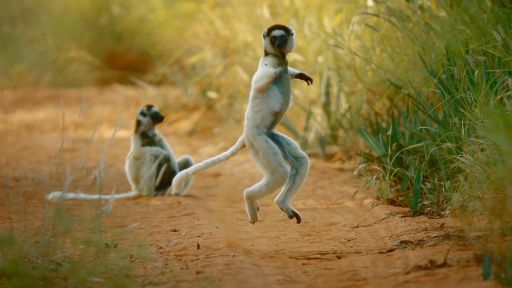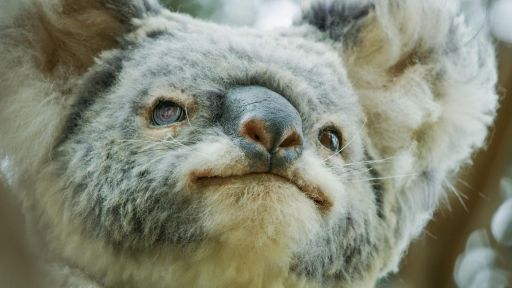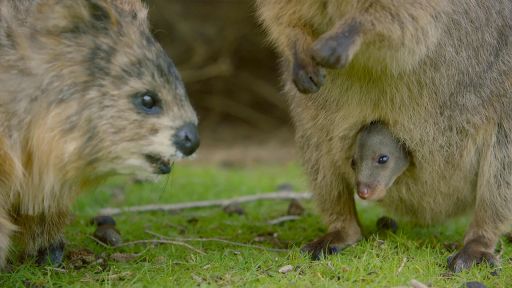Phil Dalton, Huw Williams and Matt Gordon of John Downer Productions answered NATURE’s questions about the best moments of creating NATURE’s recent miniseries, Spy in the Wild 2. From the funniest to the most beautiful to the most surprising moment, the filmmakers talk about the most noteworthy moments of the series.
The second episode of Spy in the Wild 2 premieres and streams on Wednesday, May 6, at 8/7c (check local listings).
Q: What was the most beautiful moment in the wild?
HUW:
We are incredibly lucky to be able to visit some remarkable places in the world. Whether this was our morning boat rides through the morning mist in the Bornean jungle or to see the peaks of South Georgia rising up out of the sea after an arduous 8-day sail. But for me, I think a lasting memory was seeing the Mobula rays jumping in their thousands and clearing out of the water as the sun was setting.
PHIL:
While filming monarch butterflies in the rugged mountains of North West Mexico, we experienced something truly magical. Monarch butterflies overwinter in their millions high up in the fir forests. In Spring, during the hottest part of the day, they cascade down from the trees and very occasionally they leave en-masse. We were lucky enough to film this ‘mega’ cascade. There were so many filling the sky they blotted out the sun and the forest floor fell into shadow. What followed was an avalanche of butterflies raining down over our heads, their colorful wings turned the sky bright orange. This was the beginning of their migration back to North America, and spy hummingbird captured their epic departure.
Q: What was the funniest moment in the wild?
MATT:
There were a couple of moments that cracked us up while on location. For example, seeing the facial expression of Spy Egret after he was kicked in the face by a Pygmy elephant while filming in Borneo. His bill was all twisted and his feathers were all flustered. But like many of our spy creatures, he could still carry on filming.
Then, of course, there were the mountain gorillas. It was amusing to see their reaction to spy gorilla. The young gorilla’s expression after he knocked over spy gorilla was priceless. However, the funniest moment had to be when we were all quietly and seriously filming the gorillas, with the scientist nearby, then all of a sudden came the loudest and probably longest fart we have ever heard. You try not to react, but when you see even the scientist crack a smile, it’s hard not to burst out into laughter.
HUW:
There are many moments in the field that you just have to laugh at. It’s often true that working with people in extreme environments can create the funniest situations. Whether it’s helping each other up the mountains in search of gorillas or enduring the seasickness together due to the ferocity of the Southern Ocean.
It was a long journey to South Georgia, but one moment does come to mind. In the Arctic, when the mosquito clouds were at their worst, Phil and I went for our first baths in weeks in the nearby glacial pools. Phil dove into his chosen pool and submerged, refreshed. I found a pool of my own, stripped off and performed the same jump but was bitterly disappointed to find the pool I chose was much shallower than I thought. The water barely covered my feet. The mosquitos saw their opportunity. I ended up sitting in a puddle of water desperately splashing myself to keep the swarm of mosquitos at bay. I decided it was the last time I was to bathe during that shoot.
The animals are always providing great sources of entertainment. Being around great apes is a great example. Especially the young gorillas as they clumsily explore their surroundings, test their siblings and interact with their new friends, including the spy creatures.
PHIL:
Our most outlandish moments was during the filming of elephant seals on the island of South Georgia in the Southern Ocean. The beachmasters are the dominant bulls that spend the summer fighting to protect their harem of females from other males. We needed a spy creature that would be suitable for front-line action. Spy elephant seal was based on a low-tech approach, an inflatable filled with water and air for stability and impact resistance. Standing at 3-meters-tall with cameras in its eyes, spy elephant seal filmed in the heart of the battles, providing a viewpoint no camera operator would dare go. But towards the end of the shoot, one bull decided to practice his fighting technique on our spy. Unfortunately, the air and water-filled design were not enough, it popped and quickly deflated.
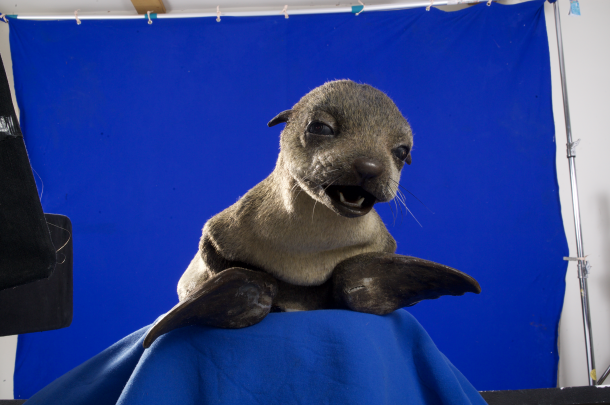
Q: What was the most surprising moment in the wild? What was the most interesting thing caught on camera?
MATT:
While it was fascinating to see a jaguar, one of the most magnificent predators in the wild, suddenly look like a gentle and inquisitive house cat as the jaguar discovered our spy jaguar cub.
There were two moments that were even more surprising and interesting. Firstly, there was an incredible moment when a young baby gorilla wanted to play with our spy gorilla, so he started to beat his chest. Then when our spy gorilla also beat his chest, the real young gorilla responded by beating his chest again, which was just wonderful to watch. It showed our spy creature was truly interacting with the real animals.
But of course, there was also the moment in the edit suite when going through the hours of footage, we discovered that we had recorded, for the first time in the wild, mountain gorillas humming and singing while they ate. Sometimes they start singing after a rainstorm when the sun comes out and they are eating one of their favorite foods. One starts humming then two or three others join in to create a chorus of high-pitched singing. There are various theories about why gorillas, in general, do this. It’s believed that it is possibly a sign of contentment while eating. It is also believed that it might be a way of informing the group that it’s mealtime. While scientists had seen and heard mountain gorillas doing this in the past, it had never been filmed or recorded among mountain gorillas in the wild, so this was a very special moment.
HUW:
For me, this has to be when we filmed the Mobula rays in Mexico. Our spy ray was right in the heart of the school of rays and witnessed behavior never filmed before. They swam in a circle, creating a vortex that concentrated the plankton, allowing an easier meal. This was captured with spy ray below the water and spy pelican covering it from the air. It was an incredibly exciting thing to capture.
PHIL:
While filming arctic wolf pups in Ellesmere Island in Canada’s far north we miraculously managed to film the wolf family hunting musk ox. This was never our plan. We were more focused on family life with cubs around the den. We knew that filming a hunt was highly unlikely due to the challenges with keeping up with the pack on the ground.
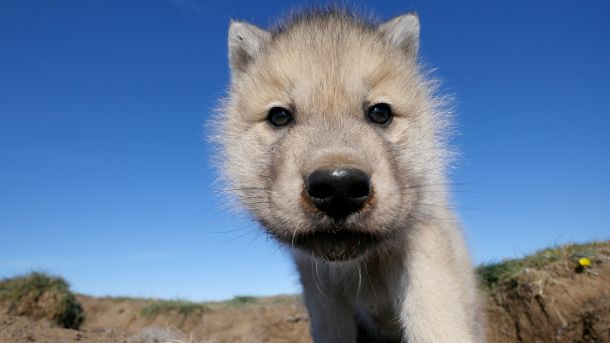
Successful hunts have rarely been filmed. But on one particular day, the entire pack left the den with their 3-month-old cubs. We managed to follow them from the ground and air with the help of our flying spies. What unfurled was an epic hunt, which included the entire family. The pups remained close by watching and learning valuable hunting techniques. This was the pups first-ever hunt, and we were fortunate enough to film this.

